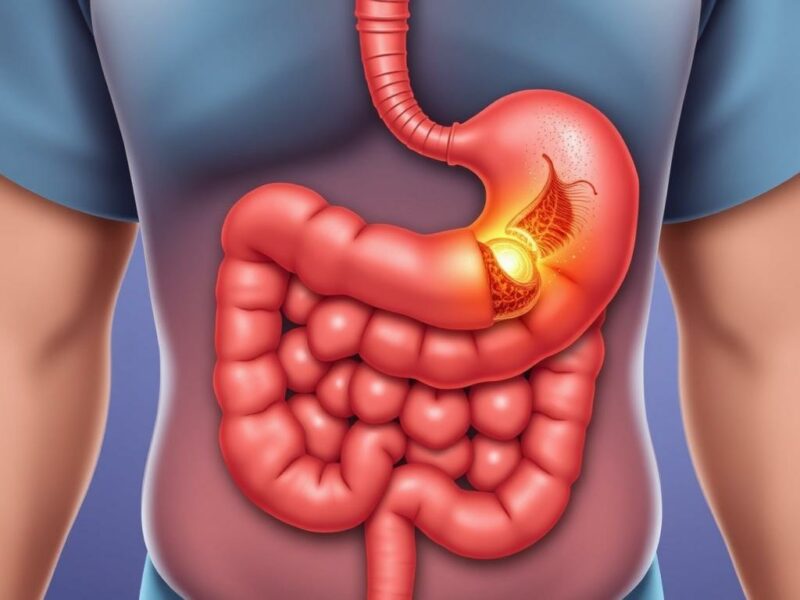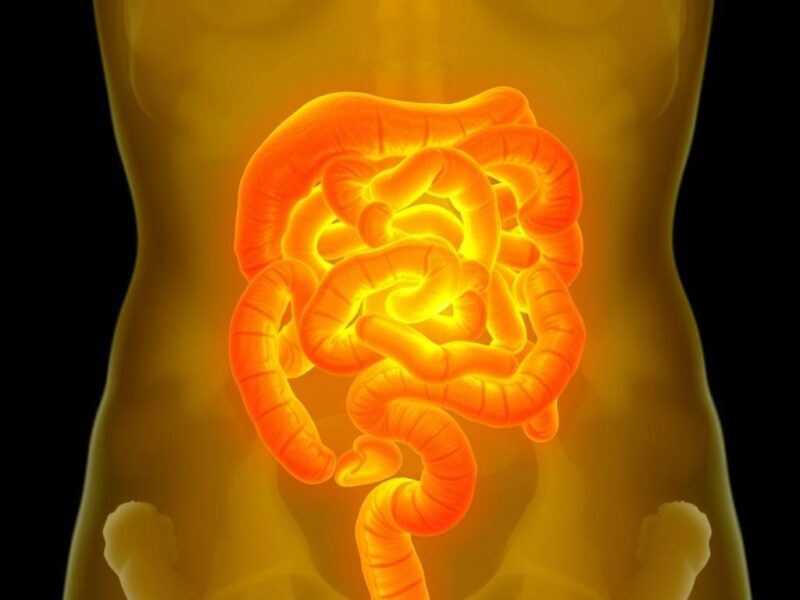When it comes to abdominal emergencies, an appendiceal abscess is one of the serious complications that can arise from appendicitis. Although appendicitis itself is a common condition, the formation of an abscess within or near the appendix demands prompt attention and a clear understanding of what it involves. Many people are unfamiliar with what an appendiceal abscess is, how it develops, or the treatment options available. This comprehensive guide aims to demystify the condition by discussing its causes, symptoms, diagnosis, and management strategies in detail. Whether you’re a medical student, a caregiver, or simply a curious reader, this article will walk you through everything you need to know about appendiceal abscess in an accessible, conversational style.
What is an Appendiceal Abscess?
An appendiceal abscess is essentially a collection of pus that forms as a complication of appendicitis. When the appendix becomes inflamed and infected, sometimes the infection can lead to the formation of a pocket of pus, encapsulated by surrounding tissues. This happens because the body tries to limit the spread of infection by surrounding the inflamed appendix with a “wall” made of nearby organs, fat, and connective tissues, which results in the abscess. Instead of spreading freely within the abdominal cavity, the infection stays localized, but it still requires medical intervention. The condition can be painful, dangerous if left untreated, and often requires more nuanced treatment compared to simple appendicitis.
How Does an Appendiceal Abscess Develop?
The journey to an appendiceal abscess starts with appendicitis, which is inflammation of the appendix. This inflammation can be caused by blockage—often by a piece of hardened stool, a foreign body, or swelling due to infection. Once blocked, bacteria within the appendix multiply rapidly, leading to swelling and infection. In some cases, the inflamed appendix may rupture or perforate, spilling infectious material into the surrounding tissues. Instead of widespread infection across the abdomen, the body contains the infection by forming an abscess around the appendix.
This defensive mechanism is crucial but has its downsides. The abscess can cause swelling, pain, and fever. The pus-filled cavity may grow if not drained, leading to further complications like sepsis, which is a life-threatening bloodstream infection. Timely diagnosis and treatment are therefore vital to prevent worsening conditions.
The Risk Factors for Appendiceal Abscess
While anyone with appendicitis can develop an appendiceal abscess, certain factors increase the likelihood:
- Delayed diagnosis or treatment of appendicitis
- Perforated or ruptured appendix
- Immunocompromised state (e.g., diabetes, cancer, HIV)
- Older age
- Presence of underlying health conditions that compromise healing
Understanding these risks can help both patients and healthcare providers be alert when symptoms worsen or when initial appendicitis diagnosis is delayed.
Identifying the Symptoms of Appendiceal Abscess
Recognizing an appendiceal abscess early can be tricky because its symptoms often resemble those of appendicitis or other abdominal conditions. However, some signs may indicate that an abscess has developed:
- Persistent or worsening abdominal pain: Usually in the lower right side but may radiate.
- Fever and chills: Due to ongoing infection.
- Abdominal tenderness and swelling: Noticeable in the right lower quadrant.
- Nausea and vomiting: Common symptoms tied to abdominal infections.
- Loss of appetite and general malaise: Feeling unwell overall.
- Palpable mass: Sometimes, a lump can be felt in the abdomen caused by the abscess.
If you or someone you know experiences these symptoms following appendicitis or severe abdominal pain, immediate medical evaluation is critical. Delayed response can lead to complications such as generalized peritonitis, where infection spreads throughout the abdominal cavity.
How is Appendiceal Abscess Diagnosed?
When a patient presents symptoms suggestive of an appendiceal abscess, healthcare providers will use several diagnostic tools to confirm the condition and plan the treatment:
| Diagnostic Method | Description | Purpose |
|---|---|---|
| Physical Examination | Checking for tenderness, swelling, and rigidity in the abdomen | Assessment to locate pain and detect any palpable mass |
| Blood Tests | Complete blood count (CBC) to check white blood cell count | Detect signs of infection and inflammation |
| Ultrasound | Use of sound waves to visualize abdominal organs | Detect fluid collections, abscess presence |
| CT Scan (Computed Tomography) | Detailed imaging using X-rays and computers | Most accurate for detecting appendiceal abscess, mapping size and location |
| MRI (Magnetic Resonance Imaging) | Imaging using magnetic fields and radio waves | Alternative imaging especially in pregnancy or when CT is contraindicated |
Among these, the CT scan is considered the gold standard, offering a detailed view to help surgeons decide on the best course of action. Ultrasound may be preferred initially for its convenience and lack of radiation but sometimes offers less definitive results.
Treatment Options for Appendiceal Abscess

Treatment for an appendiceal abscess varies depending on the size, severity, and patient’s overall health. The goal is to manage infection, drain the abscess, and eventually remove the affected appendix to prevent recurrence. Here are the primary treatment approaches:
1. Conservative Management with Antibiotics
If the abscess is small and the patient’s condition is stable, doctors may opt for conservative management. This involves hospitalization, intravenous antibiotics to combat the infection, and close monitoring. The body can sometimes resolve smaller abscesses with antibiotics alone, avoiding immediate surgery.
2. Percutaneous Abscess Drainage
For larger abscesses, or those that don’t improve with antibiotics, percutaneous drainage is often performed. This minimally invasive procedure uses a needle or catheter inserted through the skin under ultrasound or CT guidance to drain pus from the abscess. This helps reduce infection and inflammation, often stabilizing the patient before elective surgery.
3. Interval Appendectomy
After resolution or significant improvement of the abscess, the infected appendix is typically removed surgically in a planned operation known as interval appendectomy. This is usually scheduled weeks after initial treatment to allow inflammation to settle and reduce surgical risks. Removing the appendix prevents future episodes of appendicitis or abscess formation.
4. Emergency Surgery
In certain cases—such as worsening symptoms, rupture of the abscess, signs of generalized infection, or failure of conservative treatment—emergency surgery may be necessary. The surgeon performs appendectomy and may drain the abscess surgically during the procedure.
Factors Affecting Treatment Decisions
The management of appendiceal abscess is not the same for every patient. Several aspects guide the medical team:
| Factor | Influence on Treatment |
|---|---|
| Size of Abscess | Larger abscesses usually require drainage before surgery |
| Patient Stability | Unstable patients may need immediate intervention or intensive care |
| Availability of Imaging/Facilities | Advanced imaging like CT is essential for proper diagnosis and drainage guidance |
| Underlying Health Conditions | Conditions like diabetes or immunosuppression may necessitate more aggressive treatment |
| Presence of Complications | Complications such as generalized peritonitis require urgent surgery |
Recovery and Possible Complications
Recovery after treatment of an appendiceal abscess depends largely on how quickly and effectively the abscess was managed. With prompt attention, most patients recover fully with minimal issues. However, delays or improper treatment can lead to serious complications including:
- Spread of infection throughout the abdomen (peritonitis)
- Sepsis and systemic infection
- Recurrent abscess formation
- Intestinal obstruction or adhesions
- Prolonged hospital stays and multiple surgeries
Following discharge, patients are usually advised to complete antibiotic courses and attend follow-up appointments. Lifestyle adjustments such as balanced diet, hydration, and rest support healing. In rare cases, additional interventions may be required if complications arise.
Prevention and Early Recognition

Preventing an appendiceal abscess revolves largely around early detection and treatment of appendicitis. By addressing appendicitis promptly, you reduce the risk of rupture and abscess formation. Some tips include:
- Seek immediate medical care if experiencing persistent right lower abdominal pain
- Pay attention to fever, nausea, and vomiting accompanying abdominal discomfort
- Follow healthcare providers’ advice regarding treatment and medication adherence
- Avoid self-medicating for appendicitis symptoms because delays can be dangerous
Role of Imaging in Prevention
Advanced imaging like ultrasounds and CT scans not only help in diagnosis but also play a part in preventing abscesses by ensuring timely and accurate intervention. When doctors have clear images of the inflammation, they can decide quicker on surgical or conservative management, curbing the progression toward abscess formation.
Frequently Asked Questions About Appendiceal Abscess
| Question | Answer |
|---|---|
| Can appendiceal abscess resolve without surgery? | Yes, small abscesses sometimes respond well to antibiotics alone; however, surgery is often required later to remove the appendix. |
| Is appendiceal abscess a medical emergency? | It can become one if left untreated since the infection can spread and cause serious complications. |
| How long is the recovery after appendiceal abscess treatment? | Recovery typically takes a few weeks, but it varies depending on treatment type and patient health. |
| Can an abscess recur after treatment? | Yes, if the appendix is not removed or if the abscess is not fully drained, recurrence is possible. |
Living with Appendiceal Abscess: Patient Experiences
Many patients describe the experience of appendiceal abscess as both physically and emotionally stressful. The pain and discomfort can be severe, and the uncertainty surrounding treatment options may add anxiety. However, most patients who receive timely care recover well and return to normal life. Support from family, clear communication with healthcare teams, and understanding the condition—like what’s shared in this article—can make a big difference in coping with this health challenge.
Conclusion
Appendiceal abscess is a complex yet manageable complication of appendicitis. Understanding its causes, recognizing its symptoms, and seeking prompt medical attention can prevent serious outcomes. Treatments range from antibiotics to drainage and surgery, tailored to individual patient needs. With advances in medical imaging and minimally invasive techniques, the prognosis for patients with appendiceal abscess has improved dramatically. If you ever experience prolonged abdominal pain or suspect appendicitis, do not delay in contacting a healthcare provider—early intervention can be life-saving. Staying informed about this condition helps demystify the fears and equips you to make the best decisions for your health or that of your loved ones.



